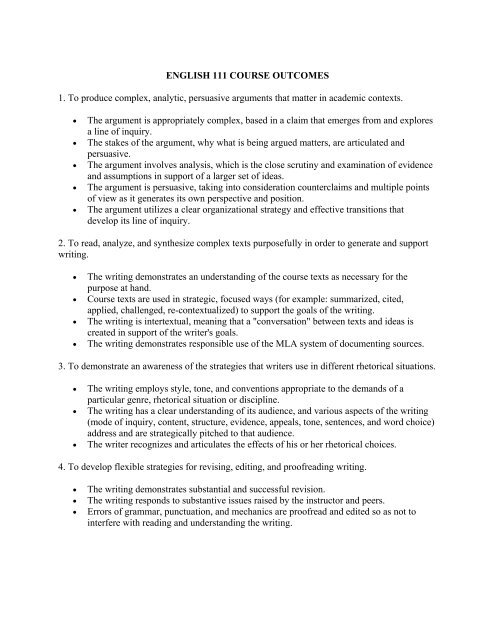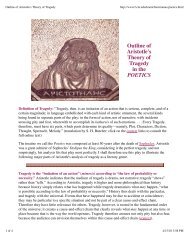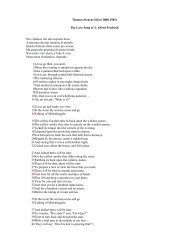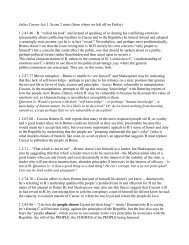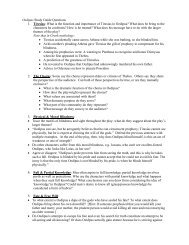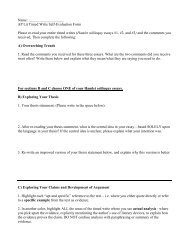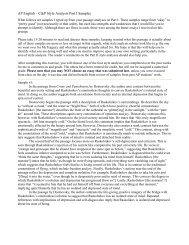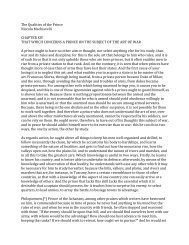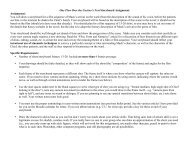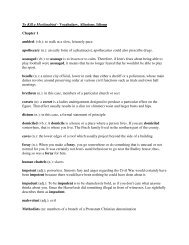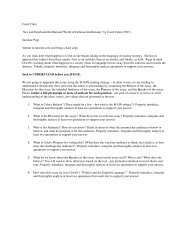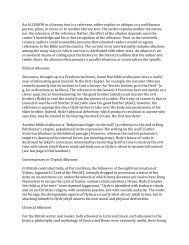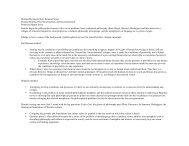Cover Letter and Portfolio Assignment Your final assignment for the ...
Cover Letter and Portfolio Assignment Your final assignment for the ...
Cover Letter and Portfolio Assignment Your final assignment for the ...
Create successful ePaper yourself
Turn your PDF publications into a flip-book with our unique Google optimized e-Paper software.
ENGLISH 111 COURSE OUTCOMES<br />
1. To produce complex, analytic, persuasive arguments that matter in academic contexts.<br />
• The argument is appropriately complex, based in a claim that emerges from <strong>and</strong> explores<br />
a line of inquiry.<br />
• The stakes of <strong>the</strong> argument, why what is being argued matters, are articulated <strong>and</strong><br />
persuasive.<br />
• The argument involves analysis, which is <strong>the</strong> close scrutiny <strong>and</strong> examination of evidence<br />
<strong>and</strong> assumptions in support of a larger set of ideas.<br />
• The argument is persuasive, taking into consideration counterclaims <strong>and</strong> multiple points<br />
of view as it generates its own perspective <strong>and</strong> position.<br />
• The argument utilizes a clear organizational strategy <strong>and</strong> effective transitions that<br />
develop its line of inquiry.<br />
2. To read, analyze, <strong>and</strong> syn<strong>the</strong>size complex texts purposefully in order to generate <strong>and</strong> support<br />
writing.<br />
• The writing demonstrates an underst<strong>and</strong>ing of <strong>the</strong> course texts as necessary <strong>for</strong> <strong>the</strong><br />
purpose at h<strong>and</strong>.<br />
• Course texts are used in strategic, focused ways (<strong>for</strong> example: summarized, cited,<br />
applied, challenged, re-contextualized) to support <strong>the</strong> goals of <strong>the</strong> writing.<br />
• The writing is intertextual, meaning that a "conversation" between texts <strong>and</strong> ideas is<br />
created in support of <strong>the</strong> writer's goals.<br />
• The writing demonstrates responsible use of <strong>the</strong> MLA system of documenting sources.<br />
3. To demonstrate an awareness of <strong>the</strong> strategies that writers use in different rhetorical situations.<br />
• The writing employs style, tone, <strong>and</strong> conventions appropriate to <strong>the</strong> dem<strong>and</strong>s of a<br />
particular genre, rhetorical situation or discipline.<br />
• The writing has a clear underst<strong>and</strong>ing of its audience, <strong>and</strong> various aspects of <strong>the</strong> writing<br />
(mode of inquiry, content, structure, evidence, appeals, tone, sentences, <strong>and</strong> word choice)<br />
address <strong>and</strong> are strategically pitched to that audience.<br />
• The writer recognizes <strong>and</strong> articulates <strong>the</strong> effects of his or her rhetorical choices.<br />
4. To develop flexible strategies <strong>for</strong> revising, editing, <strong>and</strong> proofreading writing.<br />
• The writing demonstrates substantial <strong>and</strong> successful revision.<br />
• The writing responds to substantive issues raised by <strong>the</strong> instructor <strong>and</strong> peers.<br />
• Errors of grammar, punctuation, <strong>and</strong> mechanics are proofread <strong>and</strong> edited so as not to<br />
interfere with reading <strong>and</strong> underst<strong>and</strong>ing <strong>the</strong> writing.


